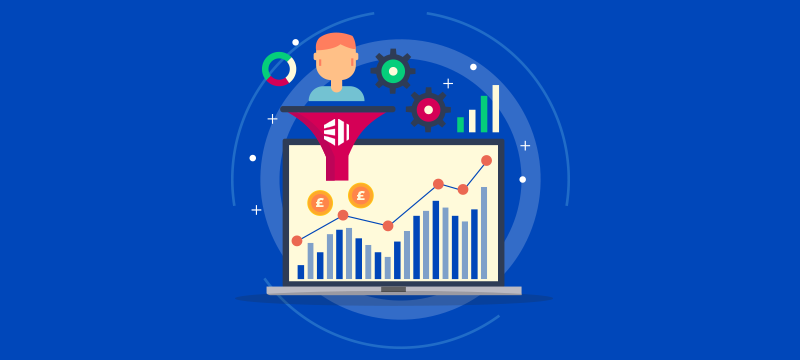How effectively your website does its job depends upon its ability to transform casual visitors into engaged customers, subscribers or avid followers. This transformation is measured using what are called ‘conversion rates’. In this post, we look at what conversion rates are and why they are important, as well as giving you eight proven ways to increase them.
What are conversion rates?
The conversion rate of a website is, quite simply, the percentage of visitors who perform a desired task. You can have many desired tasks and have conversion rates for each, for example, making a purchase, subscribing to a newsletter, downloading an e-book, or registering for an online course. In terms of quantifying your conversion rates, if your website gets 1000 visitors in a month and 50 of them make a purchase, then you have a sales conversion rate of 5%. By comparing how conversion rates change over time, you can tell if your website is performing better or worse and make any necessary changes.
You can keep track of conversion rates using free tools like Google Analytics, which enables you to set up the desired actions you want to track and then automatically monitor the percentage of visitors that carry them out.
Benefits of Improving Conversion Rates
Improving your conversion rate means maximising the potential of your existing traffic, helping you make a higher return on investment (ROI) for your marketing activities. This can be a cost-effective strategy because, rather than investing further to attract more traffic, you’re fine-tuning your site to obtain more value from the current visitors. Additionally, a better conversion rate not only ensures more sales or leads but also gives you a competitive advantage. With more conversions from the same traffic, you’re likely getting ahead of competitors who might be attracting more visitors but converting fewer of them.
Here are the eight tips to boost your website’s conversion rates:
- Clear Call-to-Action (CTA)
CTAs are key on-page elements that guide your visitors toward a conversion. Their design, colour, contrast, positioning and wording are crucial. A compelling CTA isn’t just about saying ‘Buy Now’; it’s about making that instruction stand out and creating a sense of urgency and importance. - Mobile optimisation
Today, more people search on mobiles than on computers. This means you must ensure that your site looks and functions perfectly across various screen sizes. From touch-friendly buttons to easily readable fonts, every detail contributes to a seamless mobile experience – and all these can boost mobile conversion rates. - Trust elements
To have the confidence to buy from you, potential customers need to have trust in your business. Building trust online is therefore vital. To do this, publish genuine testimonials with names and faces, showcase certifications from reputable institutions, flaunt any awards and prominently display security badges to assure visitors of their data’s safety. At the same time, make sure your company’s name, registration and VAT number, physical address and contact details are easily found. Better still, place them in the footer. - Fast loading times
Each second of delay in page loading can reduce conversions drastically. It is widely accepted that even a one-second delay can cut rates by up to 7%. To speed up your website, implement techniques like lazy loading (where elements load only when they come into view), compress images without compromising quality, and use reliable hosting services known for speed and uptime. - High-quality images and videos
Visual images can be a game changer in making people buy. Detailed product images from multiple angles, videos showcasing usage or benefits, and infographics breaking down complex concepts can engage visitors more effectively and drive conversions.Want to enhance visitor engagement? Check out 6 Tips to Keep Visitors Engaged and On Your Website
- Intuitive navigation
A user-friendly website structure is crucial for achieving better conversion rates. Ensure clear categorisation of content and products, install a search bar with autosuggestions, and enable breadcrumbs for easy backtracking so users can easily find what they are seeking. - Split Testing
As not all audiences are alike, it can be helpful to test variations of things on your site to see which converts better. This can be anything from a different homepage, to something more subtle, like the colour of your CTA. Split testing enables you to see which of the different versions performs better and if you do this on an ongoing basis, you can continually boost conversions. - Offer live chat
Visitors value real-time interactions. A live chat system, with knowledgeable representatives ready to assist, can answer questions, clarify doubts, address concerns and guide visitors towards a decision, all in real-time.
Conclusion
Increasing your website’s conversion rate is a process that requires ongoing analysis and refinement. Ultimately, success lies in understanding your audience’s behaviour and shaping your strategies to match. Hopefully, the tips mentioned above will provide you with a strong starting point to convert visitors into lasting customers.
Looking for fast, reliable and secure hosting that can help boost conversion rates? Check out our range of hosting solutions.



